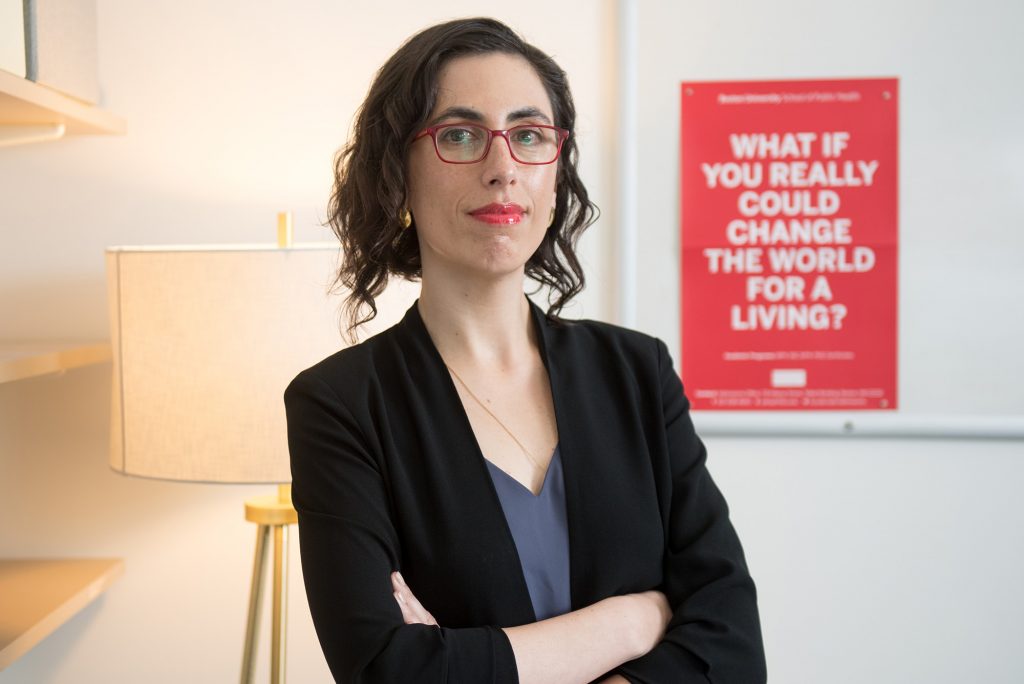The COVID-19 pandemic took a toll on many faculty college students, however researchers didn’t discover an enormous spike in reported psychological well being issues in the course of the semesters of the pandemic. Quite they noticed a continuation of a troubling pattern. Picture by iStock/lightspeedshutter
Faculty Scholar Psychological Well being
The speed of psychological well being issues, together with nervousness and melancholy, has steadily elevated over the previous eight years, with charges even increased amongst racial and ethnic minority college students
To say that faculty years are a time of nice change is an understatement; whether or not you keep at or near dwelling, or transfer away to a four-year college, the publish–highschool years are sometimes a time of latest experiences, unfamiliar duties, rising pains, and studying curves. They can be a time when some college students need to navigate their very own bodily and psychological well being for the primary time with out parental help.
“Faculty is a key developmental time; the age of onset for lifetime psychological well being issues additionally instantly coincides with conventional faculty years—75 p.c of lifetime psychological well being issues will onset by age 24,” says Sarah Okay. Lipson, a Boston College College of Public Well being assistant professor of well being legislation, coverage, and administration. For greater than 10 years, she’s studied faculty pupil psychological well being with the Wholesome Minds Community, a nationwide venture she coleads with researchers on the College of California, Los Angeles, the College of Michigan, and Wayne State College.

In a brand new research, Lipson and her colleagues reveal simply how frequent melancholy, nervousness, and different psychological well being points are, and the way these points take a toll on college students of colour unequally. The paper appears to be like at survey information collected by the Wholesome Minds Community between 2013 and 2021 from 350,000 college students at over 300 campuses. It’s the primary long-term, multicampus research of its form to parse out variations in remedy and prevalence of psychological well being points throughout race and ethnicity. The research was coauthored by Lipson and different members of the Wholesome Minds Community group.
“As a budding clinician of colour, I feel the monitoring of those tendencies helps help efforts associated to stigma discount and [mental health] training that may be focused towards sure communities,” says Jasmine Morigney, a medical psychology doctoral pupil at Japanese Michigan College and a coauthor on the research.
The researchers used screening instruments to measure psychological well being signs, ranges of flourishing, and whether or not a pupil acquired remedy throughout their time in school; members self-identified their race and ethnicity.
They discovered that the psychological well being of school college students throughout the US has been on a constant decline for all eight years of knowledge analyzed, with an general 135 p.c enhance in melancholy and 110 p.c enhance in nervousness from 2013 to 2021; the variety of college students who met the standards for a number of psychological well being issues in 2021 had doubled from 2013.
Want for Psychological Well being Assist Outpacing Assets
American Indian/Alaskan Native faculty college students had been discovered to have the most important will increase in melancholy, nervousness, suicidal ideation, and different psychological well being issues, in addition to the most important decreases in flourishing. Again in 2016, a few third of American Indian/Alaskan Native college students screened optimistic for melancholy, the same degree to different racial and ethnic teams within the research. However by the 2019 and 2020 semesters, half of these respondents had been screening optimistic for melancholy.
“There has not been almost sufficient analysis on this inhabitants,” Lipson says. “My hope is that these information doc the urgency round understanding among the distinctive components shaping these college students’ psychological well being. American Indian/Alaskan Native college students have to be introduced into the dialog for universities to put money into sources that align with their preferences.”
For white college students, the prevalence of non-suicidal self-injury and signs of consuming issues elevated most importantly in comparison with different teams. In all different classes—melancholy, nervousness, suicidal ideation, and a number of psychological well being issues—will increase had been seen probably the most amongst non-white college students. Throughout the semesters of the COVID-19 pandemic, American Indian/Alaskan Native college students and Asian/Pacific Islander/Desi American (APIDA) college students reported probably the most vital will increase in psychological well being considerations, in keeping with the info.
Though extra college students general are searching for assist and entry to psychological well being companies on faculty campuses than they had been in 2013—which is sweet information, says Lipson—the prevalence of psychological well being points appears to be outpacing the variety of college students discovering and receiving help. And a few teams of scholars are literally much less prone to get assist than a decade in the past. For instance, Arab American college students skilled a 22 p.c leap in psychological well being points, however had an 18 p.c lower in remedy over the eight years of the research, highlighting a essential hole between onset of signs and accessing assist. Throughout the semesters of the pandemic—when many faculties went distant—fewer college students of colour had been accessing essential companies.
“I discover the change in remedy charges amongst college students of colour within the context of the COVID-19 pandemic to be fairly stunning,” Morigney says. Remedy declined probably the most in 2020 amongst APIDA and Black college students. “Given the affect of the pandemic on this group and concentrated traumatic racism, it makes this discovering fairly alarming,” she says.
Not Only a Pandemic Drawback
Although researchers tracked vital will increase in nervousness and melancholy in the course of the top of the COVID-19 pandemic, Lipson says the numbers present a continuation of a troubling pattern fairly than a singular spike.
“The disaster associated to psychological well being exists past the school and college setting,” Lipson says. However the potential to intervene and attain college students at a uniquely necessary time of life is large. “It won’t be excellent, however many four-year schools supply among the greatest sources individuals will ever have,” Lipson says, since these establishments can use their sources to take away many boundaries to care, corresponding to an absence of obtainable suppliers, lengthy wait instances, and monetary restraints.
College insurance policies to handle and get rid of racial discrimination on campus and in healthcare settings also can scale back the psychological well being danger components that many college students of colour expertise.
“I’d like to see universities work to boost and promote variety of their behavioral well being employees,” says Morigney. College students of colour might not know if their campus counseling facilities have employees with comparable cultural backgrounds and may very well be reluctant to hunt out companies, she says. “The vast majority of psychological well being professionals are white, and universities are essential for not solely offering college students with culturally and ethnically various care, but additionally offering alternatives for clinicians of colour to serve these pupil our bodies.” Offering coaching alternatives to encourage college students of colour to enter the sphere of psychological well being can also be an enormous alternative.
“Probably the most necessary elements of this research is documenting these inequalities and speaking them to of us who can use this data to enact change,” Lipson says. For schools throughout the nation apprehensive about retention charges—many schools are seeing extra college students stop earlier than finishing their research—she says the conversations about retaining college students and psychological well being have to be introduced collectively. It’s usually the “identical college students who’ve the bottom price of retention in increased training [who] are the identical college students who’re least prone to entry psychological well being companies when they’re struggling, and psychological well being is a predictor of retention,” she says.
“Within the large image, we have to carry psychological well being into the classroom in order that it doesn’t require a pupil needing to make time or getting motivated to hunt assist,” Lipson says. “There’s a lot we are able to do to carry psychological well being into the default of scholars’ lives.”
BU college students searching for help can attain out to Scholar Well being Providers; college, employees, and worker relations can contact BU’s College & Workers Help Workplace for assist with work and life challenges.
This work was supported by the Nationwide Institutes of Well being.
